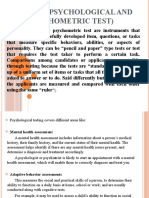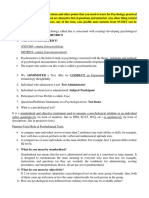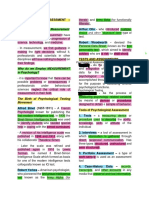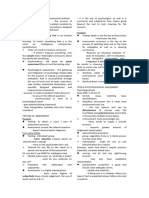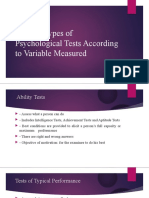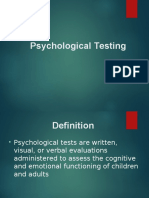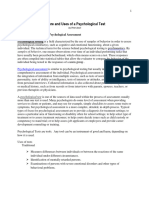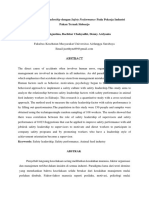0% found this document useful (0 votes)
29 views26 pagesPsychological Testing
The document discusses different types of psychological testing including intelligence tests, personality tests, aptitude tests, achievement tests, and projective tests. It describes the purpose and examples of each type of test as well as important concepts like informed consent and avoiding experimental bias in psychological research.
Uploaded by
mazedul.refatCopyright
© © All Rights Reserved
We take content rights seriously. If you suspect this is your content, claim it here.
Available Formats
Download as PDF, TXT or read online on Scribd
0% found this document useful (0 votes)
29 views26 pagesPsychological Testing
The document discusses different types of psychological testing including intelligence tests, personality tests, aptitude tests, achievement tests, and projective tests. It describes the purpose and examples of each type of test as well as important concepts like informed consent and avoiding experimental bias in psychological research.
Uploaded by
mazedul.refatCopyright
© © All Rights Reserved
We take content rights seriously. If you suspect this is your content, claim it here.
Available Formats
Download as PDF, TXT or read online on Scribd
/ 26






